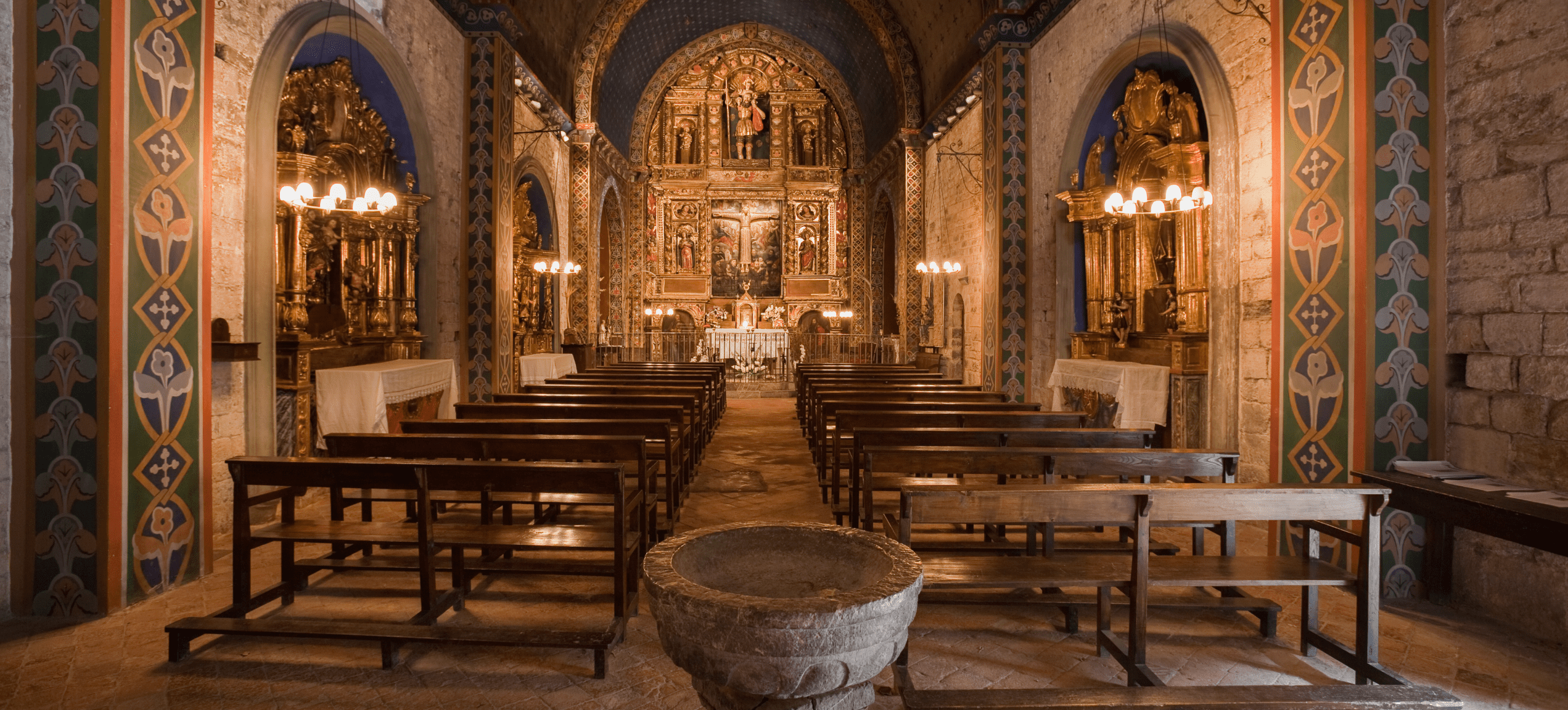

Blog

Journalist, communicator, curious walker, in love with people and my little country
We present a selection of Romanesque churches, an architectural style found all over the Girona Pyrenees.
Simple, austere, robust. Perhaps it is because of their beautiful geometry or the landscape that has witnessed the passing of a millennium that these architectural gems always exude a truly special magnetism. We begin our brief journey in the 10th century, when Christianity in Western Europe adopted as its civil and religious architectural form a style that, years later, would be called ‘Romanesque’. The religious and economic powers of the day had hundreds of thousands of chapels, churches and basilicas built across the old European map. Girona’s mountain regions are a good example of this and, beyond the buildings that occupy its towns and cities, it is common when climbing a road, path or footpath to suddenly hear: “Look! There is a chapel up there, isn’t it beautiful? And imagine the views it must have!”.

Església de Sant Cristòfol de Beget. Maria Geli - Pilar Planagumà. Arxiu d'Imatges PTCBG.
The county of Ripollès boasts some truly outstanding examples of Romanesque architecture, crowned by the great monastery of Santa Maria de Ripoll, with its wonderful portal and cloister; the monastery of Sant Joan de les Abadesses, originally under the orders of Abbess Emma of Barcelona, making it the only female monastery in Catalonia; and the smaller monastery of Sant Pere de Camprodon. In the middle of some towns you can also find examples, such as the lovely church of Sant Cristòfol de Beget and the smaller churches of Sant Esteve de Llanars and Sant Miquel de Setcases. If you are seeking the calm surroundings of a valley, Sant Valentí de Salarça awaits you beside a large oak tree, and if you are looking for unforgettable panoramic views don’t miss the shrine of Santa Maria de Montgrony, excavated from the living rock, and a little further up you’ll find the beautiful chapel of Sant Pere, with an entrance porch as lovely as the inside which can be visited by requesting the key from the shrine’s cafeteria.

Ripoll. Nicholas Burns. Arxiu d'Imatges PTCBG.
Garrotxa is another county with many Romanesque religious buildings. The town of Besalú, with its medieval structure, was once the home of the Romanesque Monastery of Sant Pere, although only the church remains today. Another vestige is the church of the former monastery of Sant Sepulcre de Palera, in Beuda, so called because it enjoyed certain favourable treatment and going there on pilgrimage was equivalent to visiting the distant Basilica of the Holy Sepulchre in Jerusalem. Protected by a fairytale landscape are the chapels of Sant Martí and Sant Miquel del Corb in Les Preses, and enjoying spectacular views over the Llémena valley is the church of Sant Aniol de Finestres. We would also mention three equally important places: the beautiful village of Maià de Montcal, the idyllic Santa Maria del Freixe de Mieres and the church of Santa Maria de Ridaura which is, in fact, one of the oldest in the county.

Sant Climent de Talltorta, Cerdanya. Kris Ubach. Arxiu d'Imatges PTGCB.
A place of worship for some, a restful spot for others, an object of admiration for many, all these stone buildings have survived periods of war and peace, famine and abundance, as well as floods, droughts and snowfalls. They tell the story of our history. They are part of our cultural heritage. And it is precisely to raise awareness of these treasures that the region of Cerdanya has launched the Les Claus de les Esglésies de Cerdanya (the keys to the churches of Cerdanya) project in collaboration with the Diocese of Urgell. As part of this programme, an expert guide can accompany you inside the most outstanding churches in the region: Santa Maria d’All, Sant Pere d’Alp, Santa Cecília de Bolvir, Sant Esteve de Guils de Cerdanya, Santa Eugènia de Saga, Sant Climent de Talltorta… An enriching and exciting journey into the past which can also be enjoyed online at www.cerdanya.org/tours-virtuals.